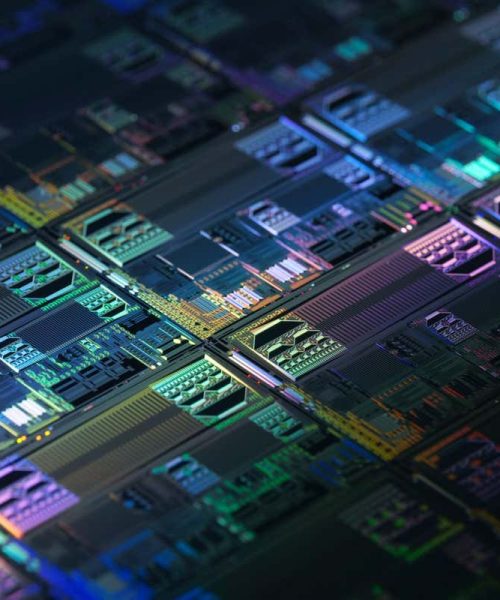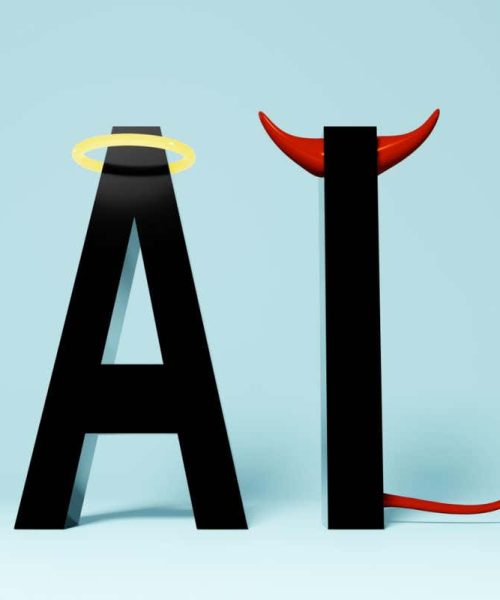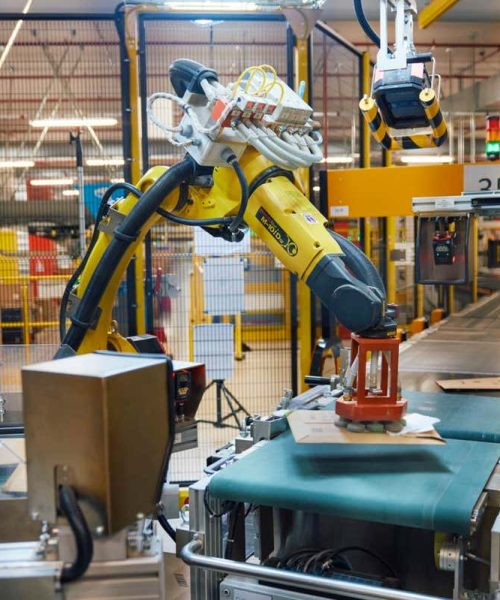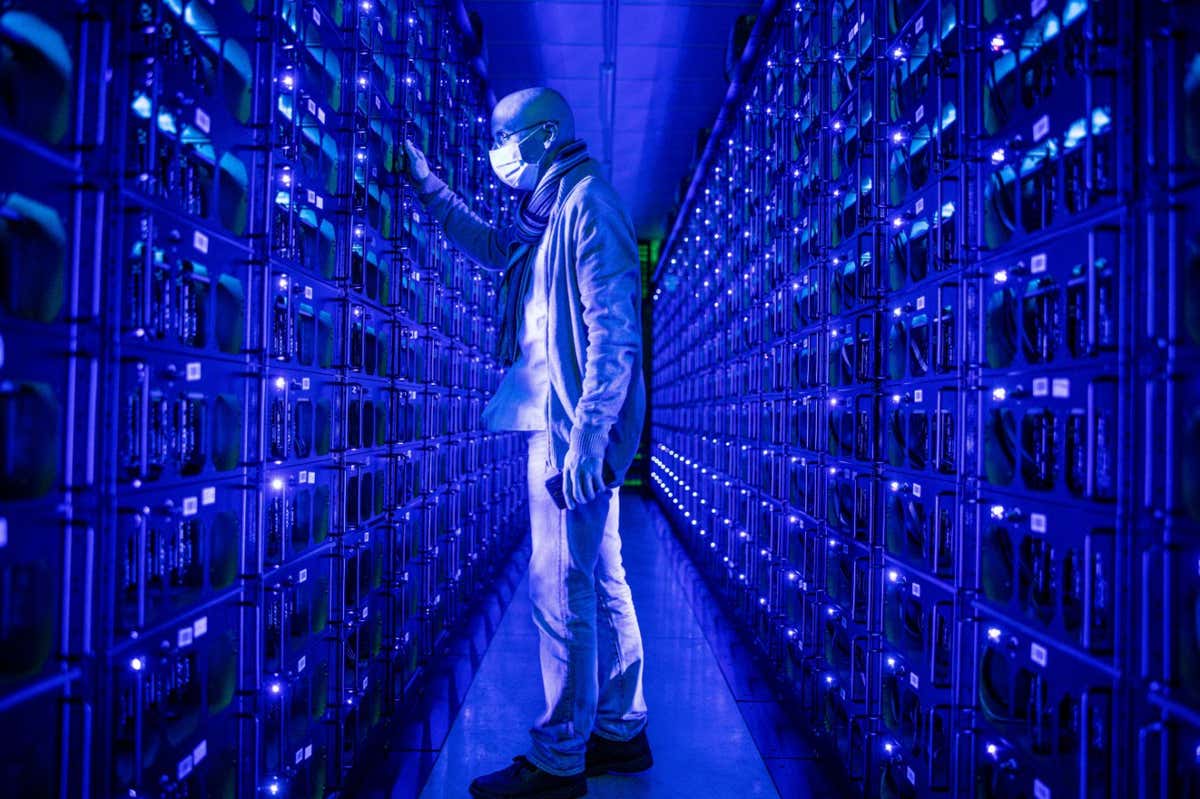
The Evobits “farm” in Romania mines the Ethereum and Zilliqa cryptocurrencies
Akos Stiller/Bloomberg via Getty Images
Quantum computers could be used to mine existing cryptocurrencies like bitcoin or future, more energy-efficient ones, slashing their electricity use, according to two new analyses.
Cryptocurrencies that rely on a “proof of work” method perform computationally intensive calculations to produce new coins and certify transactions, at great energy cost. Some networks have moved to less power-hungry techniques, like Ethereum’s “proof of stake”, but bitcoin, the world’s largest cryptocurrency, still runs on proof of work and consumes 0.5 per cent of electricity globally.
Now, two proposals suggest that quantum computers might be able to help cut this energy use.
Advertisement
Adapting cryptocurrency schemes to run on quantum computers is tricky, says Gavin Brennen at Macquarie University in Sydney, Australia, because the computational speed-up offered by such machines can make it too easy to solve the problems that networks like bitcoin rely on to prove work has been done.
“This really changes the dynamics of the network,” says Brennen. “So, we were looking for a way to use quantum devices and be faster and more energy efficient, but that wouldn’t distort the consensus dynamics too much.” Such distortion could affect the value of the cryptocurrency.
Brennen and his team have proposed using a kind of quantum computer called a boson sampler to create a new cryptocurrency network, which should be a more energy-efficient alternative when run on quantum hardware.
For two people on the network to agree on something, which is required to certify transactions or mine currency, they both must prove they have performed true boson sampling, which involves measuring a sample of photons that have passed through a labyrinth of mirrors and beam splitters. Classical computers can’t accurately make these measurements above a certain number of photons.
To allow the scheme to work, Brennen and his team had to modify traditional boson sampling by making the photon measurements less exact, because the chance of two people getting the same combination of measurements was so improbable. This is needed so people can verify a solution. By placing the values of the measured photons in ranges, it becomes more likely that two quantum miners will get the same result, says Brennen.
The approach is theoretical, but Brennen and his team are working on a real-world implementation of the scheme on quantum devices.
If quantum computers come to threaten the encryption that cryptocurrencies rely on to be secure, this method could be a useful alternative and save energy too, says Mark Webber at UK start-up firm Universal Quantum.
Machines capable of boson sampling don’t need to be full-blown quantum computers, but could still cost thousands of pounds, which might deter bitcoin miners from migrating, says Carlos Perez-Delgado at the University of Kent, UK. Instead, he and his colleague Joseph Kearney, also at the University of Kent, have come up with an alternative.
The pair analysed how much energy might be saved if we used quantum computers to mine cryptocurrencies. They found potential annual savings of almost 127 terawatt-hours, about 90 per cent of bitcoin’s estimated energy consumption, or equivalent to Sweden’s annual energy budget.
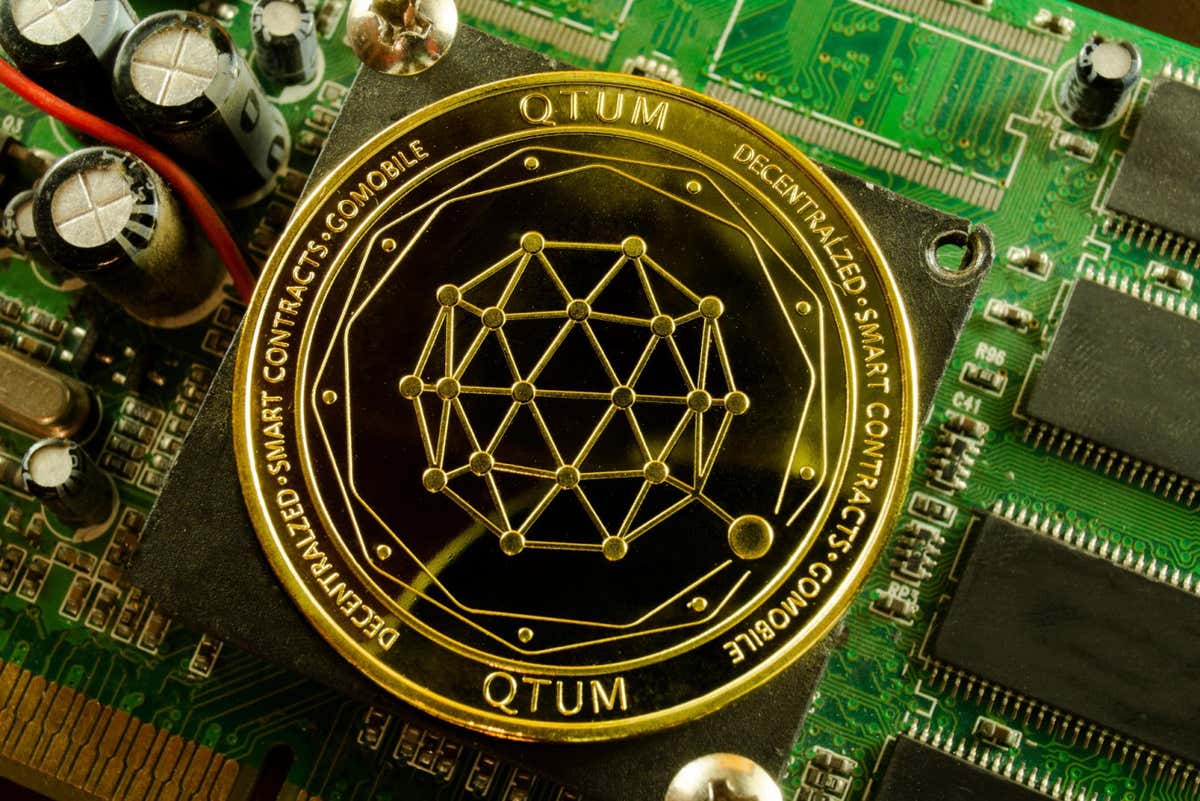
The qtum cryptocurrency isn’t actually quantum, but one day it could be
Roman Oplev/Alamy
To do this, they compared the energy cost of a commonly used bitcoin mining processor with the estimated cost of using three different quantum computers. Two were hypothetical machines that can correct errors to varying degrees and one was a current, error-prone device – these are known as noisy intermediate-scale quantum (NISQ) computers. They ran a form of what is called Grover’s algorithm to do the mining.
“It is a matter of when, not if, NISQ bitcoin miners will be used,” says Perez-Delgado. “The first person, company or entity to figure out how to cost-effectively develop custom-built NISQ crypto-miners will have a tremendous mining advantage.”
It is interesting to do these energy estimates, says Webber, but it is unclear whether this form of Grover’s algorithm might work on all quantum machines.
He would also like to know if future, fully error-corrected quantum machines would take longer to perform computations – due to time that would need to be devoted to checking errors – and thus use more energy than has been factored in here. Another issue is whether the intense cooling required to keep future quantum computers functioning might make their energy use higher than expected, he says.
Topics:


